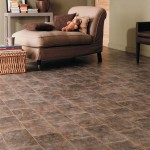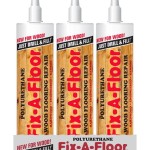Vinyl flooring is a popular choice for many homeowners due to its durability and affordability. However, regular cleaning and maintenance is necessary to keep it looking its best. Steam cleaning is an effective way to deep clean your vinyl floors, and can help to remove dirt, grime, and allergens from the surface. In this guide, we’ll take a look at the benefits of steam cleaning your vinyl flooring, as well as the steps you need to take to ensure the job is done properly.
Benefits of Steam Cleaning Your Vinyl Flooring
Steam cleaning your vinyl flooring can provide a number of benefits, including:
- Removing dirt, grime, and allergens from the surface of the floor
- Making the floor look like new again
- Extending the life of your flooring
- Improving the air quality in your home by removing allergens
- Killing germs and bacteria on the surface of the floor
Preparing for Steam Cleaning
Before you begin steam cleaning your vinyl flooring, it’s important to prepare the area. Make sure to remove any furniture from the room, as well as any rugs or mats. Vacuum the floor to remove any dirt and debris, then mop the floor with a mild cleaning solution. Allow the floor to dry completely before you begin steam cleaning.
Steam Cleaning Process
Once your floor is prepared, it’s time to begin the steam cleaning process. Make sure to use a vacuum cleaner with a steam cleaning attachment, as this will make the process much easier. Start in the far corner of the room and work your way out. Move the vacuum cleaner slowly across the floor in a straight line, allowing the steam to penetrate the dirt and grime. After each pass, use a dry towel or mop to dry the floor. This will help to ensure that there is no leftover moisture on the surface of the floor.
Cleaning Solution
It’s best to use a mild cleaning solution when steam cleaning your vinyl flooring. If you’re using a store-bought cleaner, make sure to read the instructions carefully to ensure it is suitable for vinyl flooring. If you’d prefer to make your own cleaning solution, a mixture of vinegar and water is effective and safe to use on vinyl floors.
Drying the Floor
Once you’ve finished steam cleaning your vinyl flooring, it’s important to allow the floor to dry completely. Use a dry towel or mop to dry the floor, then use a fan or open a window to help speed up the drying process. Make sure not to walk on the floor until it is completely dry, as this can cause damage to the floor.
Conclusion
Steam cleaning your vinyl flooring is an effective way to deep clean and remove dirt, grime, and allergens from the surface. By following the steps outlined in this guide, you can ensure that your vinyl flooring is properly cleaned and maintained. With regular steam cleaning and maintenance, you can keep your vinyl floor looking like new for years to come.








![Best Steam Mop For Vinyl Floors [2021 Review] HomeViable](https://i2.wp.com/homeviable.com/wp-content/uploads/2020/08/homeviable-steam-mop-for-vinyl-floors-01-768x1152.jpg)






Related Posts








